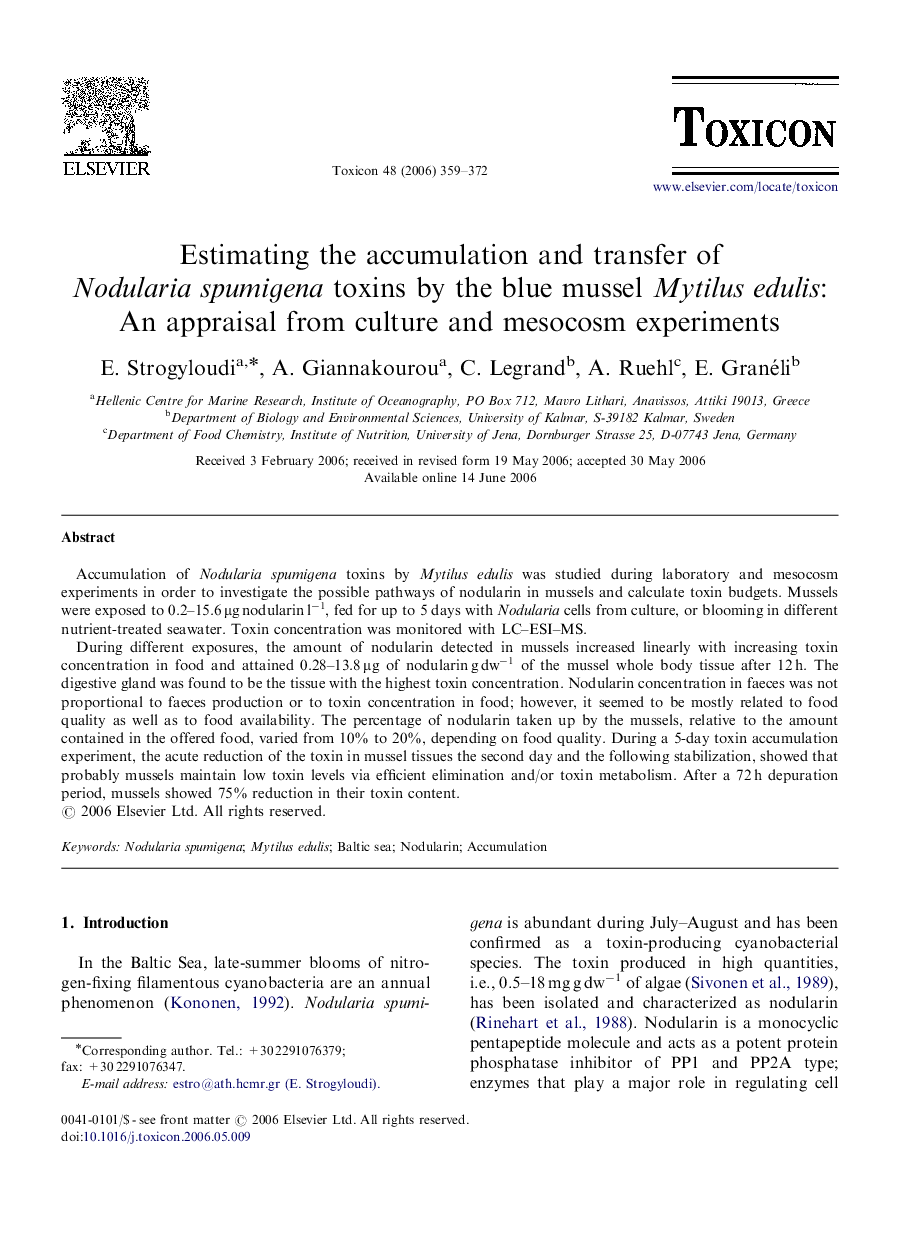| Article ID | Journal | Published Year | Pages | File Type |
|---|---|---|---|---|
| 2066171 | Toxicon | 2006 | 14 Pages |
Accumulation of Nodularia spumigena toxins by Mytilus edulis was studied during laboratory and mesocosm experiments in order to investigate the possible pathways of nodularin in mussels and calculate toxin budgets. Mussels were exposed to 0.2–15.6 μg nodularin l−1, fed for up to 5 days with Nodularia cells from culture, or blooming in different nutrient-treated seawater. Toxin concentration was monitored with LC–ESI–MS.During different exposures, the amount of nodularin detected in mussels increased linearly with increasing toxin concentration in food and attained 0.28–13.8 μg of nodularin g dw−1 of the mussel whole body tissue after 12 h. The digestive gland was found to be the tissue with the highest toxin concentration. Nodularin concentration in faeces was not proportional to faeces production or to toxin concentration in food; however, it seemed to be mostly related to food quality as well as to food availability. The percentage of nodularin taken up by the mussels, relative to the amount contained in the offered food, varied from 10% to 20%, depending on food quality. During a 5-day toxin accumulation experiment, the acute reduction of the toxin in mussel tissues the second day and the following stabilization, showed that probably mussels maintain low toxin levels via efficient elimination and/or toxin metabolism. After a 72 h depuration period, mussels showed 75% reduction in their toxin content.
